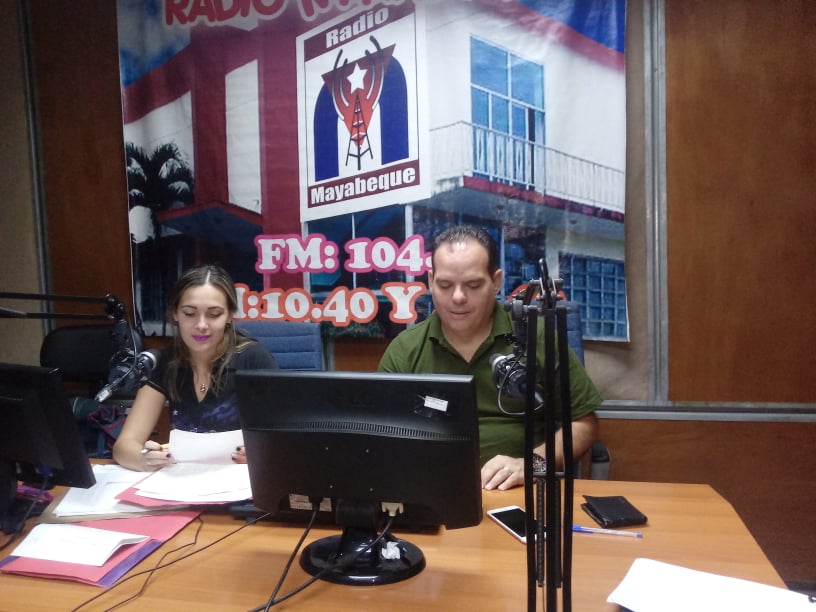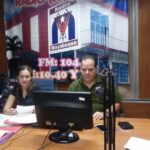The Announcer’s Day is celebrated in Cuba this December 1st, an anniversary instituted since 1954, in compliance with one of the agreements of the meeting of the National College of Broadcasters (CNL), at the proposal of its members, in remembrance of the young and active colleague of the union, Jorge Luis Nieto García, early deceased. The commemoration was made certain after the signing of a decree that precise the commemotarion from that same year, on this date.
Seven years earlier, in the city of Camagüey, on January 25 and 26, 1947, the first meeting of the CNL was held, from which its board of directors emerged with the presence of professionals of this trade from all over the nation, who, among other agreements, approved to propose to the authorities the Law of the Retirement of the Broadcaster, manage the creation of the National School of Broadcasters, found the House of the Broadcaster in Havana and in the rest of the provinces, promote the Law of Radio and establish the Day of the Announcer.
This last aspect was proposed by Félix Travieso (founder of Radio Reloj) who was a member of the CNL, followed by supportive phrases from several of those present, among them Jorge Luis Nieto, who then worked at RHC Cadena Azul. The idea was approved unanimously and the steps to this end began.
Towards the end of November 1953, a victim of Hodgkin’s disease – cancer of the lymphatic system – and at only 33 years of age, Nieto died in the capital, after leaving an extensive service record on national radio, from that at the age of 12, he began as an announcer on the CMJP radio station, in the city of Morón, then belonging to the province of Camagüey, and in 1938 he settled in Havana. When the RHC Cadena Azul was dissolved, he began to work in the CMQ.
As published by the Trabajadores Newspaper in its brief years of existence, he stood out for being an excellent announcer and entertainer, with a diction and timbre that quickly won the sympathy of radio listeners. He was a fervent defender of the unity of the guild and its demands.
The commemoration of Announcer’s Day in Cuba has its antecedents at the time when Luis Casas Romero made his first radio broadcast in Havana, on August 22, 1922, the fury of radio became a significant phenomenon among the island society that witnessed the prompt proliferation of numerous plants throughout the national geography, and along with them the beginning of a new profession: the announcer; This is why on October 20, 1935, the first Association of Radio Broadcasters in Cuba was established in Camagüey, from which the CNL emerged shortly afterwards.
On February 24, 1959, Radio Rebelde, radio station of the Revolution, went on the air from the Sierra Maestra, identified with the voice of the unforgettable presenter Violeta del Casal Díaz, symbol of the female broadcaster in Cuba and an outstanding actress.
After the triumph of the Cuban Revolution, between the final days of the year 1961 and the beginning of 1962, the Revolutionary Orientation Commission, the first of the Integrated Revolutionary Organizations – later the United Party of the Socialist Revolution – institutionalized the radio and television networks. existing in the country through the signing of Law 1030, which validated the creation of the Cuban Broadcasting Institute, on May 24, 1962.
Thirteen years later, this institution was renamed as the Cuban Institute of Radio and Television (ICRT), in order to guarantee that both media offered programming carrying high political, ideological, social, ethical and aesthetic virtues, at the service of the knowledge, culture, recreation and the defense of the most sacred values and interests of the nation and of all its citizens.
Currently, Cuba’s broadcasting network is made up of more than 800 transmitters located in 363 technical centers throughout the country. Of these, several have been installed to improve the coverage of North, Central and South America, as well as the Caribbean area, which also increased its efficiency and reliability. Cuban Radio has 99 stations, including national, provincial, municipal and local, in addition to the international Radio Havana Cuba, which cover 98 percent of the national territory.
Radio Mayabeque station pays tribute to the announcers in their day. The plant has 11 professionals of the word, who stand out for their sense of belonging, dedication and commitment.






